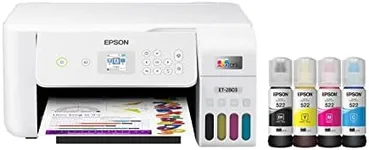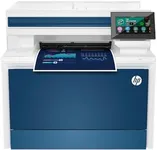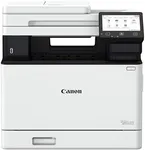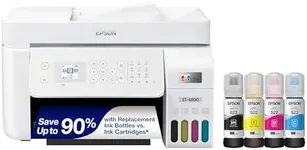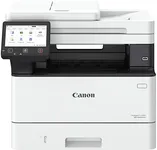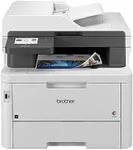Buying Guide for the Best All In One Printers
Choosing an all-in-one printer can seem overwhelming given the wide variety available, but focusing on your actual needs can make the process much simpler. All-in-one printers are designed to handle printing, scanning, copying, and sometimes faxing, all in one device. Start by thinking about how often you print, whether you need to print in color, and if you want wireless features. Consider where you'll place the printer, and how many people will use it. Focusing on what you’ll use the most will help you pick the best fit.Print TechnologyPrint technology refers to how the printer creates images and text on paper. The two main types are inkjet and laser. Inkjet printers use liquid ink and are often better for photos and color images. Laser printers use toner powder and are usually faster and better for high-volume black-and-white printing. If you mostly print text documents, a laser may be best. For colorful flyers or photos, inkjets can be the better choice. Think about the kind of documents you expect to print most often when choosing.
Print SpeedPrint speed is measured in pages per minute (ppm) and tells you how quickly the printer can produce pages. Basic printers might print fewer than 10 pages per minute, while faster models may print over 30 pages per minute. If you only print occasionally or a few pages at a time, print speed might not matter much. However, if you often print large documents or use your printer for work, a higher speed can save time and frustration.
Print ResolutionPrint resolution, measured in dots per inch (dpi), shows how detailed the prints will be. Higher dpi means sharper images and text. Most people will be satisfied with standard resolution for text and simple graphics, but if you plan to print photos or detailed images, look for higher dpi. For basic documents, resolution is less critical, but for creative projects or photos, higher numbers make a difference.
ConnectivityConnectivity refers to how you connect to the printer. Common options include USB, Wi-Fi, Ethernet, and sometimes Bluetooth. If you want to print from multiple devices or wirelessly from your phone or laptop, make sure the printer supports Wi-Fi or Bluetooth. If you'll have the printer in an office with many users, Ethernet (wired network) might be helpful. Think about where you'll use the printer and what devices need to connect to it before deciding.
Paper HandlingPaper handling includes the types and sizes of paper the printer supports, as well as input and output tray capacity. Some printers handle only standard A4 paper, while others can print envelopes, labels, or even glossy photo paper. Tray size matters for convenience: a larger tray means less refilling. If you print odd sizes or a lot at once, look for better handling features. Match the printer's paper capabilities with the kinds of documents you'll produce most.
Scanning and Copying FeaturesAll-in-one printers have scanners and copiers, but their quality and features vary. Resolution, speed, and whether the printer has an automatic document feeder (ADF) are important. Higher scanning resolution is useful for photos or detailed images; basic scanning is fine for simple documents. An ADF lets you scan or copy multi-page documents easily. If you frequently scan or copy, consider these aspects. If it's an occasional task, basic features will likely be enough.
Duplex Printing and ScanningDuplex refers to the ability to print or scan on both sides of the page automatically. This can save paper and time if you often deal with double-sided documents. Basic models often require you to manually turn the page, while more advanced ones do it automatically. If saving paper or convenience is important, look for automatic duplex features.
Size and DesignPrinters come in a range of sizes, from compact to large. If space is tight, pay attention to the printer’s dimensions. Compact models are good for small desks, while larger ones might offer extra features but need more space. Think realistically about where you’ll put it, and choose a size that fits your available area.
Operating System and App SupportSome printers are easier to use with certain computers or mobile devices. Make sure the printer supports the operating system you use, whether it's Windows, macOS, or a specific mobile platform. Good app support can also make printing from your phone or tablet much easier. If you often use mobile devices, check for strong app support and compatibility.
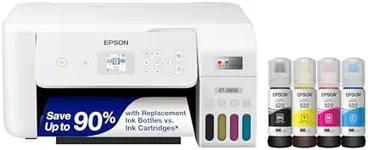
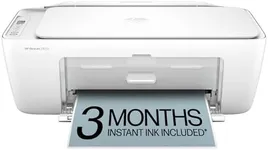
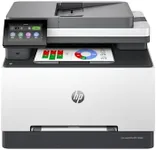

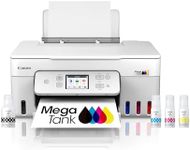
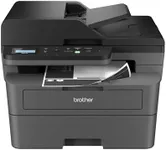

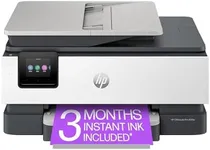
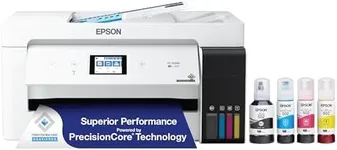

![Phomemo Portable Printer,[Upgrade]](https://images-proxy.bestreviews.guide/WLkh6sQ3CZTvo3jRgyQW5mCniHE=/0x150/https://m.media-amazon.com/images/I/51aiiurafsL._AC_CX679_.jpg)

